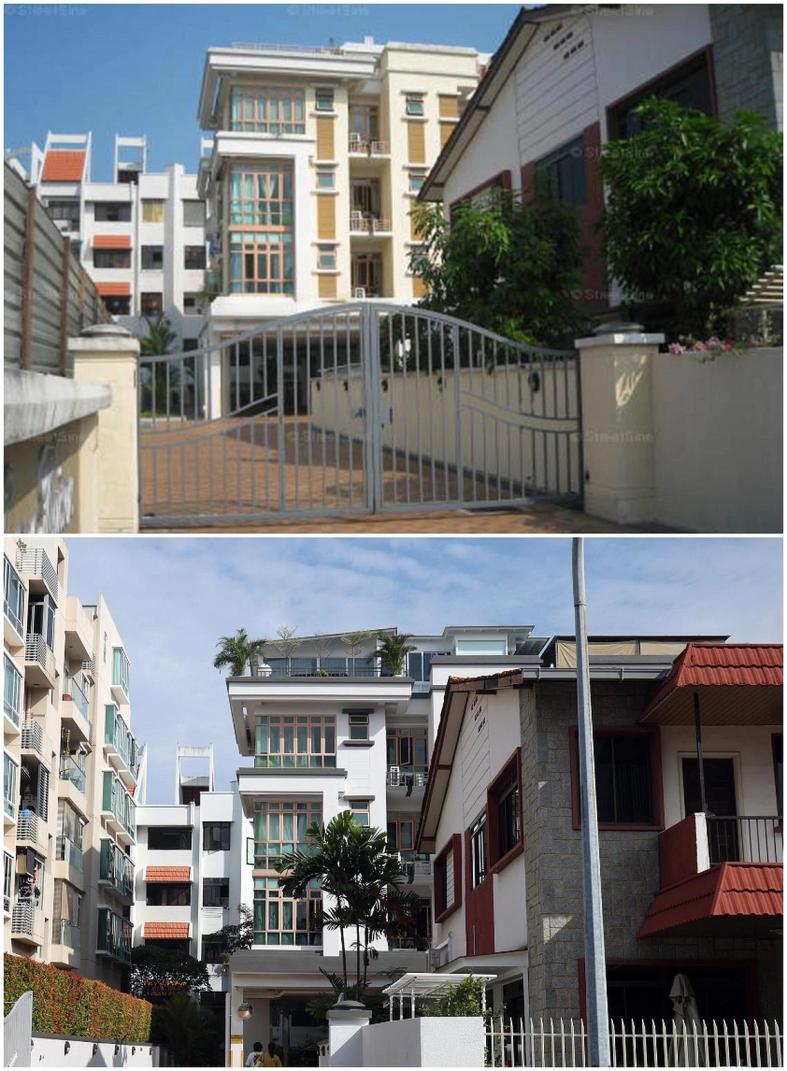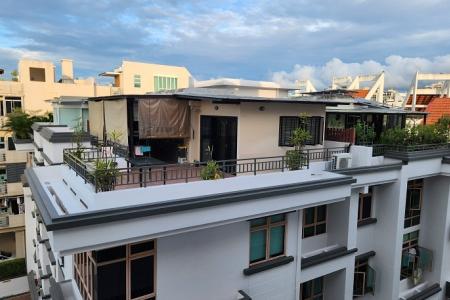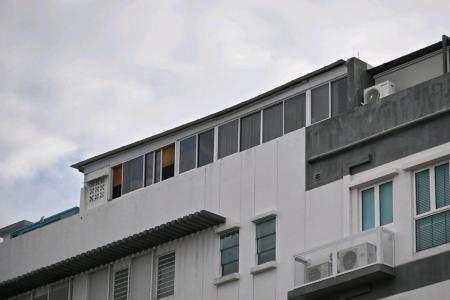URA and BCA probing possible unauthorised rooftop structures
The Urban Redevelopment Authority (URA) and Building and Construction Authority (BCA) are investigating possible unauthorised rooftop structures at two condominiums in Haig Avenue.
This follows public feedback on possible violations by several penthouse owners at Rose Maison and EiS Residences.
One of the structures in question, at the four-storey Rose Maison, appears to be a glass-enclosed space with an extended roof sheltering part of the terrace. The area is decorated with potted plants and seating.
The rooftop structure at the five-storey EiS Residences features a rectangular enclosed room with windows.
BCA has so far assessed that “there is no impact on the structural integrity of one of the units”, the agencies said in a joint response to queries from The Straits Times.
“As investigations are currently ongoing, we are unable to share more details,” they stated.
The authorities were alerted to the possible illegal roof structures and began inspection of one of the units in June 2024, ST understands.
It is unclear whether building plans for the roof terraces were submitted for approval by the penthouse owners.
According to URA and BCA, home owners must obtain approval from their management corporation strata title (MCST) before carrying out any works that affect the appearance of their building.
If the works increase the gross floor area (GFA), approval must be secured through a 90 per cent resolution at a general meeting. Additionally, home owners should ensure they comply with any relevant MCST by-laws before starting any alterations.
Beyond MCST approval, regulatory approvals may also be required. For alterations that increase the GFA or affect planning parameters, URA’s approval must be obtained, said URA and BCA.
Furthermore, BCA must approve most building works, including erection, extension, demolition, alteration or repair of a building, the agencies’ spokesmen added.
URA’s website notes that a private roof terrace refers to a semi-outdoor area located on the roof level of a strata unit. It forms part of the private strata area of units that are sold to home owners. Private roof terraces approved before Jan 12, 2013, may not be counted towards the development’s GFA.
ST contacted four of the penthouse owners in the two developments, all of whom declined to comment. The remaining four owners were not home when ST visited the premises on Aug 29 and Sept 12.
At least two of the owners are in the MCST management committee of their respective condos. One is the chairman of the EiS Residences management committee.
Residents in both developments were also tight-lipped about the situation.
The management committee of Rose Maison did not respond to queries on the matter.
EiS Residences, a 16-unit freehold condominium built in 2014, has four units on the top floor. Rose Maison, which also has four units on the top floor, is a freehold development built in 2001 with 13 units.
URA and BCA said they investigate alleged unauthorised structures brought to their attention through public feedback or during periodic inspections. Their investigations will be extended to all parties involved in the construction of these structures.
“Property owners are reminded to ensure that the necessary approvals are obtained prior to carrying out building works such as structures on roof terraces,” they added.
Property owners will be required to remove unauthorised structures if they are not allowed to be retained.
Even in cases where the structures can be retained, the owners will be subject to civil penalties and charges related to any increase in property value.

An architect in private practice who wanted to be known only as Mr Chng B.G. said unauthorised roof structures can pose significant risks to a building’s structural integrity. “It’s overloading the structure with additional superimposed load, which it wasn’t originally designed for.”
He also highlighted concerns about glass enclosures, noting that under BCA regulations, laminated glass must be used to prevent anyone falling through in the event that the glass cracks.
Safety risks extend to the residents and even neighbouring units, with Mr Chng warning that “the structure may collapse, or the construction can weaken the existing structure”.
He added that such works often go unnoticed unless discovered by URA or BCA during inspections, or in the unfortunate event of an accident or collapse.
While he could not confirm how widespread the practice of rooftop modifications is, he did observe that most unauthorised modifications typically involve enclosing balconies or open terraces, rather than more elaborate rooftop structures.
ST’s checks on Sept 14 showed that one of the penthouse units in EiS Residences has been sold, and another is being put up for sale.
On a property with possible unauthorised structures being sold, lawyer Chia Boon Teck of Chia Wong Chambers said: “If the sale and purchase agreement is silent on the matter, the responsibility falls on the new owner. However, if the issue was discussed and agreed upon between the seller and buyer, the buyer can hold the seller accountable based on their agreement.
“Buyers should consult their estate agents and conveyancers to ensure there are no illegal structures. If any are found later, the buyer can work with their estate agent and conveyancer to address the matter with the relevant authorities.”
Under the Planning Act, any person who is found guilty of carrying out or permitting the carrying out of works to build unauthorised structures without planning permission could be fined up to $200,000.
Under the Building Control Act, any person who is found guilty of starting or carrying out, or permitting or authorising any building work without obtaining planning approval or a permit to begin structural works, could be fined up to $200,000 or jailed for up to two years, or both.
Get The New Paper on your phone with the free TNP app. Download from the Apple App Store or Google Play Store now



